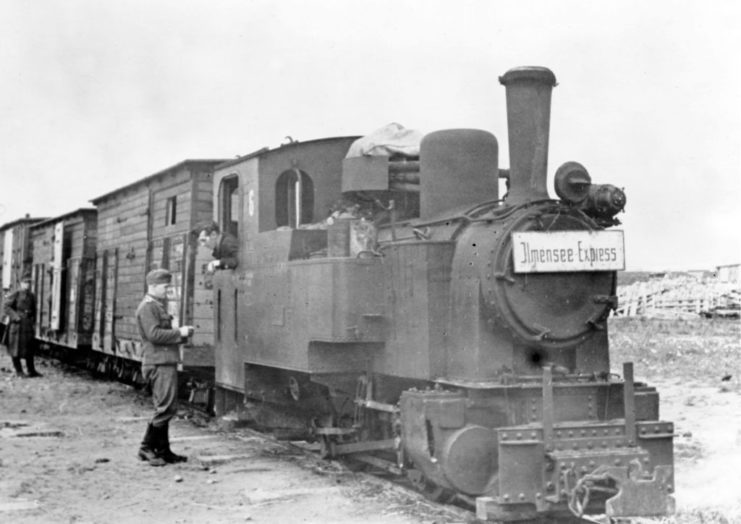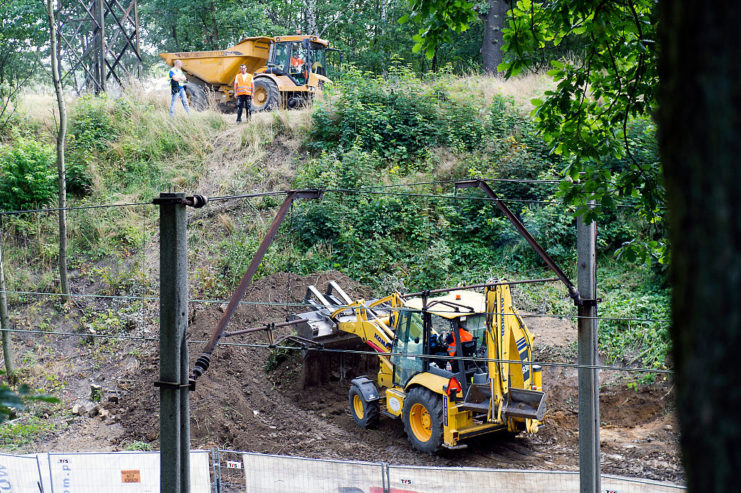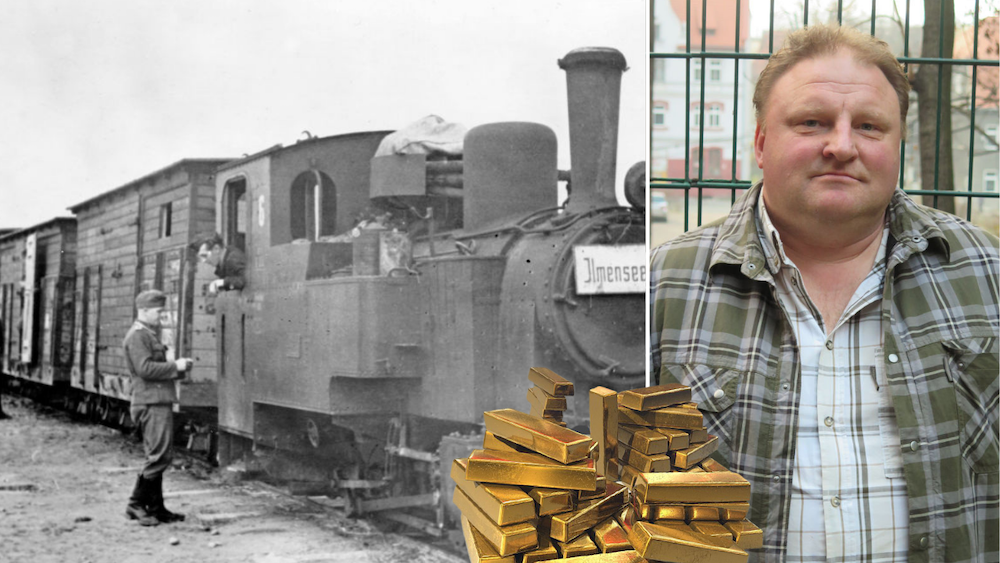Treasure hunter Piotr Koper has announced he’s possibly uncovered the legendary Nazi gold train at the bottom of a lake. After more than a decade of searching, could the Polish explorer have finally located the locomotive, the existence of which is hotly debated?
The Nazi gold train
In March 1945, the Nazis set off from the city of Goerlitz with a convoy of artwork from a museum and treasures from Russia’s Amber Room. Legend has it that as the war drew to a close, a local miner saw a group of German soldiers move the train, filled with valuables, through the Owl Mountains, near the town of Walbrzych.
Since dubbed the “Nazi gold train,” the locomotive has never been located and has become a topic of interest for both historians and treasure hunters. For some, it’s become an obsession, with many attempts being made to find it over the years.

Some have warned the train likely doesn’t contain any gold or treasures. Instead, they posit that it was loaded with chemical agents the Nazis were transporting to Berlin in a final attempt to stop the Soviet Red Army. Dangerous nerve agents, such as Tabun, are theorized to be among the chemicals onboard.
A potential discovery
In July 2021, Koper announced he and his team had found what he believes to be the remains of the Nazi gold train. Using ground-penetrating radar, bottom sonar, an underwater drone, and a proton magnetometer, signs were found indicating steel was at the bottom of a lake in the Polish village of Żarska Wieś.

To help confirm the find, Koper enlisted the help of Guinness World Records holder Marcel Korkus. After diving into the lake, he said he could “confirm the existence of a lime kiln in the northwestern part of the body of water.” He couldn’t say for sure if it was the train lying beneath the sediment, but did state he believed it “unlikely.”
After the discovery, Koper met with local media, stating, “We have decent results and we will now try to mine as we have a very strong signal of steel. We are now waiting for a GPR analysis. If the results are confirmed, we will apply for permission to extract them.”

The potential discovery comes weeks after treasure hunters located a secret network of tunnels at a former German Army headquarters that is thought by some to lead to the famed Russian “Amber Room,” though the jury’s still out on whether either of these “discoveries” will bear fruit. The Amber Room was built for Tsar Peter the Great in the 1700s and filled with gold, amber, and precious jewels, all of which were stolen by the Nazis and disappeared after World War II.
The disappearance of the loot is unsurprising. Toward the end of the conflict, the Germans dumped their stolen artwork, jewels and other possessions at various places across Europe. Much of it has yet to be uncovered.
A past search turned up empty
In August 2015, Koper and German treasure hunter Andreas Ritcher held a press conference, claiming to have located a 320-foot-long train. It was located in the Polish town of Walbrzych, eight-to-nine meters in an underground railway tunnel used by the Nazis during Project Riese.

According to Koper and Andreas, ground-penetrating radar had uncovered a series of rectangular, round and ovular shapes beneath the surface. However, the find was met with skepticism. While critics acknowledged that there could be a tunnel beneath the ground, they found it highly unlikely the Nazi gold train was hidden there.
More from us: An Incredibly Rare 1940-Era Plane Is Up For Sale
In 2016, once the site was deemed safe, they began digging. While a portion of railway track, numerous rocks, and a horseshoe were located, no signs of the train were ever uncovered. Maybe this time will be different.
